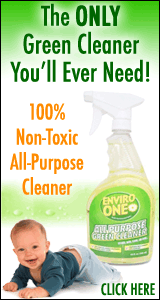Article 1: Allergic Reactions and Chemical Sensitivity
Kootenai Valley Times – July 27, 2000
– by Dr. Gloria Gilbere
Allergic reactions are as diverse as the person themselves; however, more and more people are developing severe allergies as a result of living in a toxic world. These allergies are known as chemically induced immune system disorders, and a fast spreading phenomenon associated with chemical hypersensitivity. Research by the California Dept. of Health estimates that up to 34% of Americans report symptoms of chemical sensitivity. Of this number up to 80% also have chronic fatigue syndrome; 65% have fibromyalgia, and over 85% have digestive and immune disorders.
Synthetic chemicals are all around us. They're in the products we use, the clothes we wear, the bedding we sleep on, the food we eat, the air we breathe, the medications we consume. Because chemicals are everywhere, it's impossible to completely escape exposure. These environmental allergens are life-changing, and often life-destroying, for the person afflicted and those around them. The resulting allergic reactions affect not only the way our body functions, but the physical, sociological, and emotional quality of life as well.
Multiple Chemical Sensitivity Syndrome (MCSS) is also called Environmental Illness (EI), a syndrome because it stems from a variety of causes. It is a medical condition developed by individuals exposed to chemicals in their environment that affects the neurological, immune, respiratory, skin, gastrointestinal and musculoskeletal systems. Environmental medicine, also called clinical ecology, was first developed by Dr. Theron Randolph in the 1940's, when he observed early in his medical career that food allergies and sensitivities to environmental chemicals were a major contributing factor in a wide range of allergies and diseases, including arthritis. He then discovered, of those treated by standard medical diagnostic techniques and confirmed arthritics, more than half were helped by making dietary and environmental modifications.
Low levels of toxins may have been tolerated previously, but suddenly the body loses the ability to neutralize the chemicals, and an allergic reaction occurs. The onset can be triggered from a single major exposure (as in pesticide poisoning); long-term exposure to low levels (food preservatives and additives, sick buildings, mold, off-gassing from computers, copiers, cleaning products, carpets, building supplies); side effect of prescription drugs (especially medications for pain and inflammation); serious illness or trauma. This is truly an example of our "toxic cup runneth over." When our bodies can't neutralize any more toxins, that one last exposure is what does us in!
The chemicals synthesized after World War II (pesticides, fragrances, synthetic fabrics, cleaning products, detergents, etc.) are mostly "petro-chemicals" (petroleum based) and are extremely toxic to humans. There have been virtually no studies done on the majority of these chemicals to determine consequences on humans – the industry just places the chemicals in the environment with the assumption that they are "safe, until proven toxic," instead of ensuring their safety before allowing them to be used.
According to a study by the National Academy of Sciences, 95 percent of chemicals used in fragrances are synthetic compounds derived from petroleum, yes the same ingredient as GASOLINE! The danger lies in that the perfume industry is NOT REGULATED – they can put any number of chemicals in a fragrance without revealing what those chemicals are – or how they affect humans. We humans are all participating in a giant "lab experiment"&mdashdash;against our knowledge and our will—and it's making millions of us VERY sick.
Formaldehyde is another toxic chemical that causes many of the symptoms of MCS, including dizziness, light-headedness memory impairment, attention disorders and allergies. Many of the ingredients in construction, especially mobile and modular homes, are made with particleboard, glues, plastics, and toxic finishes—all of which can outgas toxic substances including formaldehyde. Repeated exposure weakens the immune system, making you more vulnerable to other toxic chemicals. Formaldehyde is in many products including some cosmetics, baby shampoo and baby lotion. Look for "Quaternium-15" on the label—that's formaldehyde in disguise. It's also in clothing and bedding—if they're permanent press (polyester combination), crease resistant or a synthetic composition. Years of laundering does not remove the formaldehyde! It's even in some of the food we eat. Yes, formaldehyde is the stuff they embalm people with; at this rate, we won't need embalming when we die!
In the early stages of MCS, repeated exposure to the substance or substances that caused the initial health effects provokes a reaction. After a time, it takes less and less exposure to the related chemicals to cause symptoms. As the body systems break down, an ever-increasing number of chemicals, including some unrelated to the initial exposure, are found to trigger a reaction.
Once an individual becomes sensitized, he/she must avoid a wide array of chemicals in everyday life, such as fragrances, detergents, fabric softeners, auto exhaust fumes, fuels (gas/propane), smoke, insecticides, weed killers, volatile organic compounds found in paints, solvents and new building materials and furnishings. Many people also become hypersensitive to molds, aromatic plants and wood such as cedar.
Symptoms of MCS (Limited List)
Recurring headaches/ migraines
Asthma or chronic bronchial disorders
Increased sensitivity to odors
Dizziness/ light-headedness
Food/ environmental allergies
Aching joints/ muscles
Numbness/ tingling
Non-injury related inflammation
Blurred vision
Intestinal/ colon disorders
Unexplained rashes
Chronic insomnia
Impaired mental clarity
Chronically sore eyes, ears, nose, and throat
Restricted swallowing
In severe cases, anaphylaxis
Those of us who are becoming chronically ill from these chemicals are similar to the "canaries in the coal mine." Coal miners would take a canary into the mines with them to warn when the air became toxic; if the canary stopped singing or died, it was time to get out! We "human canaries" are here to warn the rest of you that, unless you become informed and start making changes to avoid as many toxic chemicals as possible, you too may become very ill, or even die, from the consequences. Education is the key in making a difference, naturally.
Future articles will provide information on chemicals and their health risks.
This and subsequent articles are for the purpose of education and to provide support to the millions afflicted with allergies and multiple chemical sensitivity syndromes.










